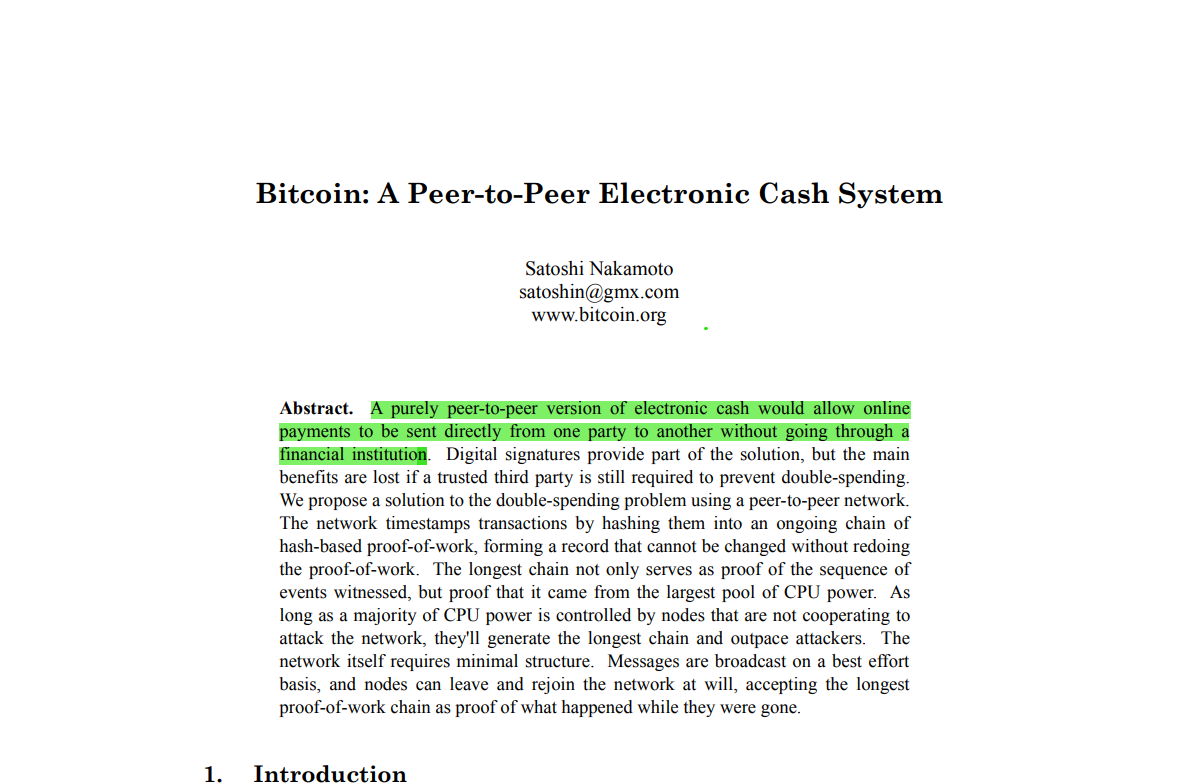Last updated on January 14th, 2025 at 05:33 pm
What could be the simplest explanation of bitcoin to an entirely novice desiring to know about crypto?
Perhaps a traditional example would help.
So, let’s assume Mr. Peter Obi wants to pay, owe, or give Mr. Dati money (N 10,000). Here, the currency would be naira (N), right? Good!! The easiest way for Mr. Obi to get this transaction done would be to just give Mr. Dati cash (Naira Notes). With that, nobody would know what has happened between Obi and Dati. No middleman of any kind. This would be the simplest and swiftest of transactions, isn’t it? But let’s assume Mr. Obi is in Lagos and Mr. Dati is in Abuja. The distance barrier would leave us to wonder how Obi can pay Dati. This leads us to a middleman or an intermediary that would have to help Obi get the N10,000 to Dati at Abuja. What/who would be the intermediary here? Yes!!! You got that answer right (bank, postal, service). Now, how does Obi trust these middlemen that they will deliver? What if Dati needs the money urgently and the bank delays or freezes the money (perhaps because of the network or stuff like that)? What if the bank monitors and decides the amount Dati would receive? These questions and more that create distrust in middlemen in transactions between two persons called for a financial system where the transacting parties can settle their transaction without a third party, regardless of distance. This is what bitcoin stands for.
By definition, bitcoin is an online software network or program that enables individuals to transfer value across the internet without the need for an intermediary. This software uses a digital currency known as “bitcoin,” with the short form BTC. It runs on its network known as Bitcoin (capital B). So, you transfer bitcoin (the value) through Bitcoin (the network). This is contained in the bitcoin white paper Satoshi wrote on October 31, 2008.
So, Satoshi sought to solve the problem engineered by third parties in transactions. But how can this be achieved? What would become of financial transactions if there were no third party to monitor and keep record of the transaction? In traditional banking, banks keep records of transactions; they update account balances and ensure that people spend what is theirs. So, how can we have an online system that lacks moderation? Satoshi figured out a solution for these concerns, and that remains the cutting edge for bitcoin and makes it unique.
Rather than having one centralised system that records transactions like in the traditional banking system, Satoshi built a decentralised system. This is built in such a way that anyone that runs a “node” can monitor transactions on these decentralised systems. A node is a computer downloaded to run the Bitcoin network. This is like a ledger as in traditional financial institutions. This is more like a database, a distributed ledger, or an individual bookkeeper that is constantly updated in real time. It is constantly checked and verified by the nodes to ensure smooth and efficient running. This is the major problem of banks with centralised ledgers or database systems. You can imagine what would happen should a hacker crack the database, or someone compromise the bank’s centralised database system.
Every few seconds or milliseconds, the activities of these node runners or validators are grouped to form a block (known as a blockchain). Basically, blockchain performs three main functions: execute transactions, verify transactions, stores transactions. Each block is linked to the one before it through a coding process known as hashing. Therefore, the network is made up of nodes. Basically, there’s no reward for these node runners accept that they help in maintain and keeping the network. This method of maintaining and keeping the network honest or transparent is what is called Proof of Work (PoW). However, there is an incentivized or reward-based form of node running known as bitcoin mining.
The number of bitcoins the software is programmed to issue is 21 million (obviously, the maximum supply of BTC). But this is not issued at once. Each block or sect of BTC is released periodically as pre-programmed by Satoshi Nakamoto. Each time a block is added to the chain (blockchain), a predetermined amount is released as a block reward. This block reward reduces overtime. By implication, it slows bitcoin issuance and inflation rate. This single method leaves miners with the option to seriously compete for this block reward. Each bitcoin miner struggles to be the one to add the latest block transactions to the blockchain and possibly claim the block reward. This is not as simple as it may sound. BTC mining is quite challenging and poses a great ecological risk because of its heavy energy consumption and emissions, except in modern days where some use renewable energy. Miners are left to make several trillions of mathematical guesses involving codes. At the end, only one miner goes home with the reward while the struggle for the next block continues.
One of the most fundamental ways in which bitcoin functions as the most secured network on earth is through the use of a public key encryption. There are three components to this, which allow anyone to carry out transactions with bitcoin.
Private Key: This is randomly generated for a new user by the Bitcoin software. It is basically an alphanumeric code used in cryptography. It is like your online bank/App password. It is used to authenticate transactions to prove ownership of a blockchain. This tells you that it must be kept secret; otherwise, you will lose your asset.
Public Key: This is basically generated from the private key. It is like your bank account number. Without further complexity, the public key undergoes some form of complex mathematical means that produces your Bitcoin address.




